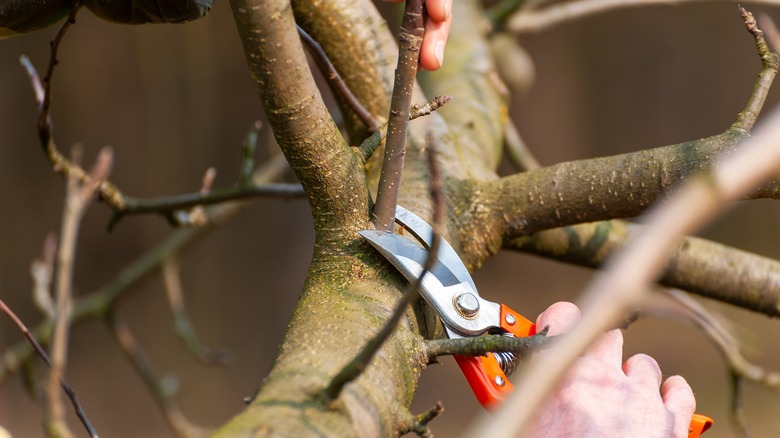Sweetgum (Liquidambar styraciflua) is a gorgeous native ornamental tree often used in landscaping as a shade tree and for its sheer unmatched beauty. The best time to prune your sweetgum tree is during the spring after the tree has flowered. However, there is more to it than just simply pruning your sweetgum tree in the spring. This unique tree does not need a lot of care, but in order to prune it and care for it in the best possible way, it’s essential to really get to know this beautiful specimen.
With a native range spanning from New York to Central Florida and West toward Texas, and even found in Central America, the sweetgum tree is highly adaptable and can thrive in many different environments. This resilient and naturally pest-resistant hardwood species does not require much pruning compared to other ornamental trees in the landscape. However, pruning is an integral part of maintaining a healthy and beautiful ornamental tree or shrub, and your sweetgum will undoubtedly benefit from yearly pruning! Pruning your trees the right way without calling a pro is not easy and takes a certain level of dedication. However, it is always safer to call a professional arborist.
What is a sweetgum tree?

With star-shaped leaves that turn bright golden to fiery orange and even shades of royal purple (often all occurring on the same tree), the sweetgum is one of the most beautiful trees to incorporate into your home landscape. Additionally, this gorgeous, narrow, pyramid-shaped tree is not prone to codominance, unlike most ornamental trees. If you are dealing with codominance or your trees are developing multiple trunks, consult an arborist immediately. However, with the lush, shade-bearing, stunning sweetgum, you typically won’t have to worry about this.
With an upright trunk, the sweetgum is a magnificent conical-shaped tree that provides shade while adding interest and a striking pop of showy color in the fall. In the wild, the sweetgum tree grows mostly in wet bottomlands alongside riverbeds, creeks, and other naturally wet areas. It flowers from April through May and subsequently puts out a spiky, hardened, and woody fruit known as a sweetgum ball. The seed-filled sweetgum ball is the most characteristic symbol of the sweetgum. As a hardwood species, sweetgum’s lumber is sought after and used for cabinetry and furniture. The inner bark contains an aromatic resin used in cosmetics, tobacco, adhesives, and lacquers. It is also known as American styrax or storax. Additionally, indigenous people in North America would historically chew the sap like chewing gum for recreation and medicinal purposes and create infusions with the bark due to its anti-inflammatory and antibacterial properties and ability to heal wounds.
How and when to prune your sweetgum tree

Pruning your sweetgum tree will keep it healthy and happy and help it to maintain a beautiful shape. Sweetgum is one of our best native ornamental tree species to use in the landscape, partially because it requires very little pruning and naturally grows in a gorgeous conical and pyramid-like shape. While some online sources claim that sweetgum trees do not require any pruning at all, others say that minimal pruning helps keep the plant healthy and maintain a solid growth habit. When pruning your sweetgum, remove dead or frost-damaged branches in the spring, right after the blooming period, usually in April or May.
Since sweetgum is a fast-growing shade tree, reaching heights of 75 feet with a 50-foot spread, regular pruning is key for safety reasons and the tree’s health. When the leaves first emerge in April, look for and remove frost-damaged branches. In the summer, remove low-hanging branches; in the winter, remove any branches that have become too large. It’s recommended to step about 50 feet away from your tree to get a good look and see what branches may need to be removed. From there, you can begin by removing suckers growing from the root base and any larger split and broken branches. However, since sweetgum trees are fast growers, it does take a professional eye to prune your tree correctly and safely. Stay safe, and hire a professional.



